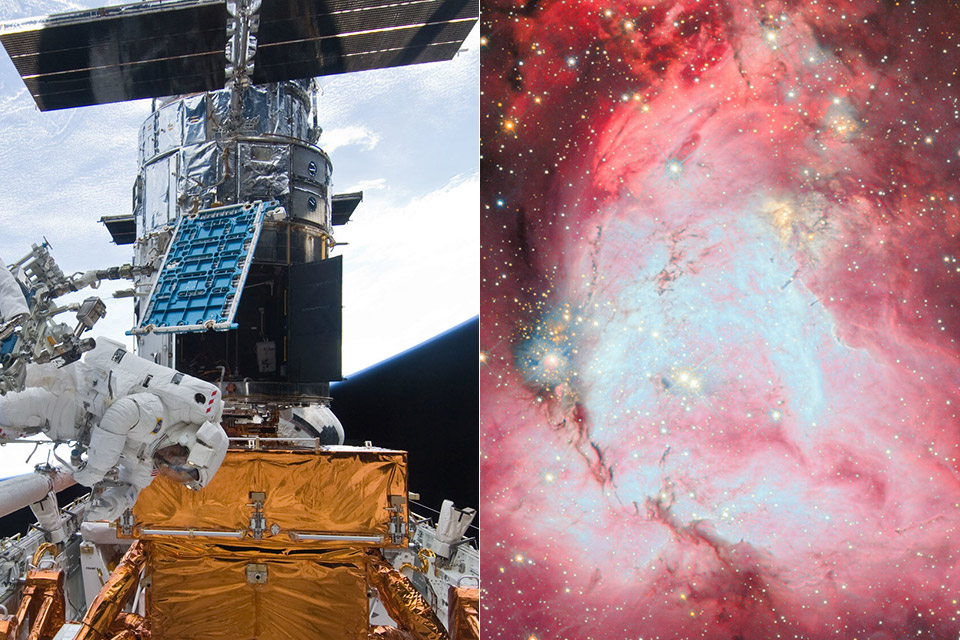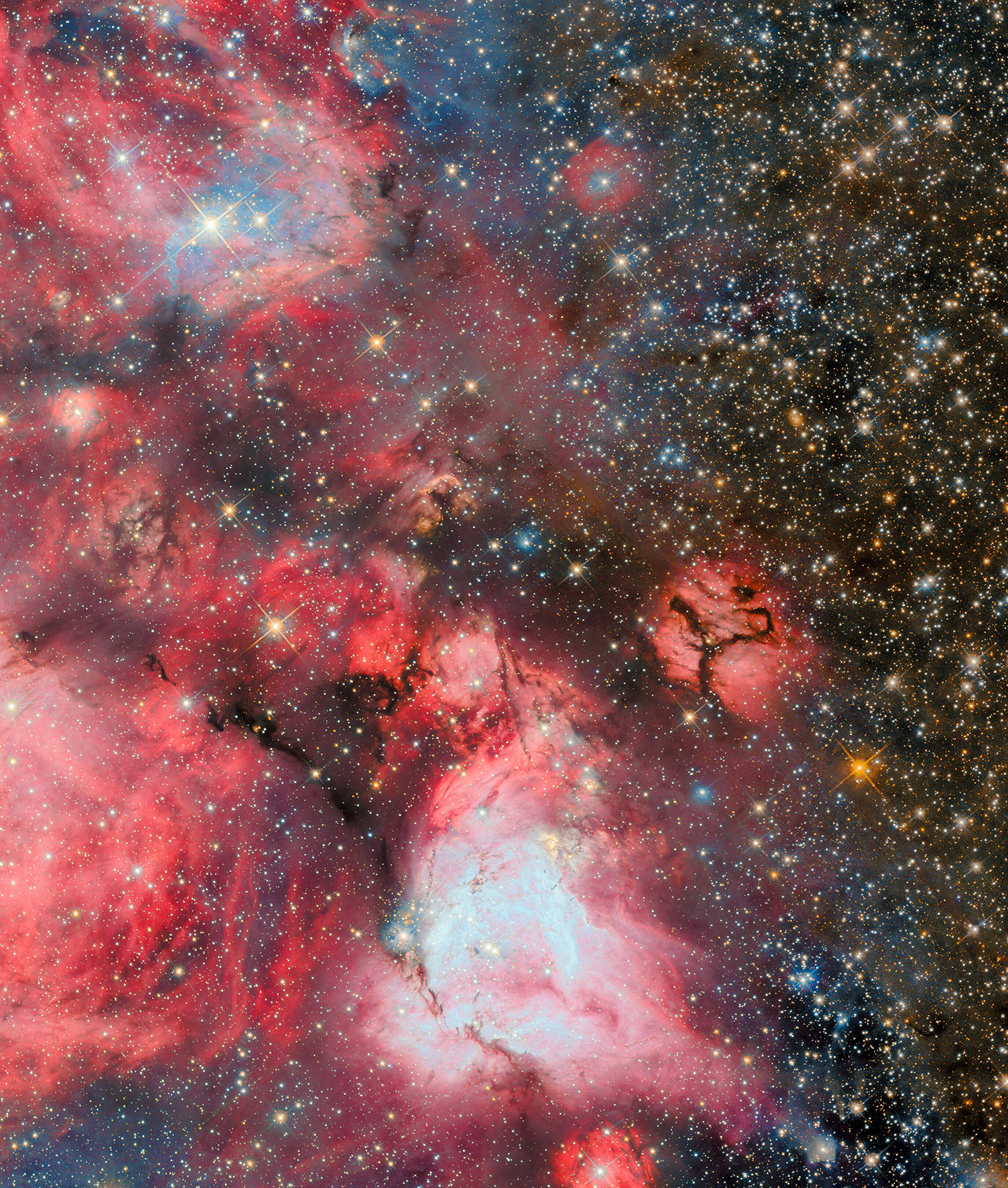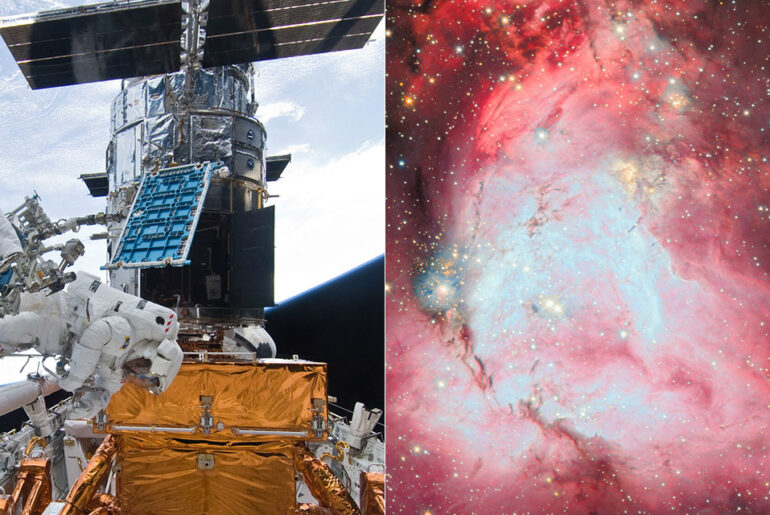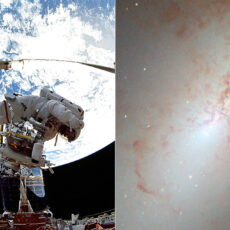
Hubble’s most recent view takes us on a wild voyage into N159, a region in the Large Magellanic Cloud where new stars emerge from vast swirling clouds of gas. This breathtaking image focuses on a small portion of what’s going on, displaying the raw machinery of star formation over a 150-light-year span. It’s located 160,000 light-years away in the southern constellation of Dorado, where gravity begins to pull in cold hydrogen gas, paving the way for those stellar nurseries to begin to light up.

Young stars are strewn throughout the image, their brilliance creating a trail through large red clouds. These clouds are just full of hydrogen, and as the star’s radiation hits them, they light up in deep, rich shades of scarlet, almost as if they are smoldering. However, in the denser regions, where the gas is so dense that it bites back and obscures the entire expanse of their birth, some of the newly formed stars cluster together. Their characteristic red glow comes from the fact that the largest, hottest ones emit the most radiation. This beautiful tapestry of whirling patterns and forms, all formed by the never-ending process of star creation, is created as all of this radiation washes over the surrounding material.
- Superior Optics: 400mm(f/5.7) focal length and 70mm aperture, fully coated optics glass lens with high transmission coatings creates stunning images...
- Magnification: Come with two replaceable eyepieces and one 3x Barlow lens.3x Barlow lens trebles the magnifying power of each eyepiece. 5x24 finder...
- Wireless Remote: This refractor telescope includes one smart phone adapter and one Wireless camera remote to explore the nature of the world easily...
The bubbles are probably the most visible indicator of this new-star eruption. Every one arises when a young star produces a large gust of wind powerful enough to blast away the surrounding gas and create a vacuum. And inside each one, the star is simply sitting there, uncovered, its brightness beaming brightly into the darkness. The edges of the bubbles are where all of the released material cools and is reabsorbed, which is why they light faintly in the first place. This is a kind of feedback loop; it manages the neighborhood and prevents the gas from collapsing too quickly, allowing additional stars to emerge over time. In N159, we can see dozens upon hundreds of these bubbles grouped together, forming a true factory of light.
Dust also plays a role in the mix, appearing as dark streaks that obscure some of the stars behind them. As you might expect, they simply appear as black lines that snake their way through the brighter sections, and they assist to channel the gas into these tight streams that feed the developing protostars. At the bottom of the frame, the color begins to soften and take on a pale blue tinge; this is due to the material becoming slightly cooler and scattering shorter wavelengths of light in a different way. And, curiously, this produces a contrast between the hotter and colder zones, emphasizing how temperature plays such an important role in the entire process; the hotter stuff gives birth to the great, massive stars, while the cooler stuff looks after the smaller companions. The Large Magellanic Cloud has a lower metal richness than our own galaxy, the Milky Way, which helps to speed the cycle and makes N159 an exceptionally interesting location to study how stars originate in a leaner environment.
Hubble created this image using three distinct filters from its Advanced Camera for Surveys and Wide Field Camera 3. One of them captures a wide spectrum of colors; at 555 nanometers, it essentially draws out the entire star field. Another at 814 nanometers allows us to view the much older, colder stars on the right side of the image. And the third, which really brings out the activity, is tuned in to catch the fresh, bright material that the stars themselves generate.
















